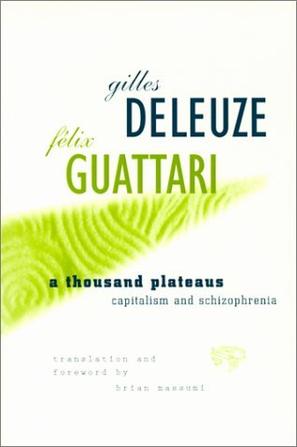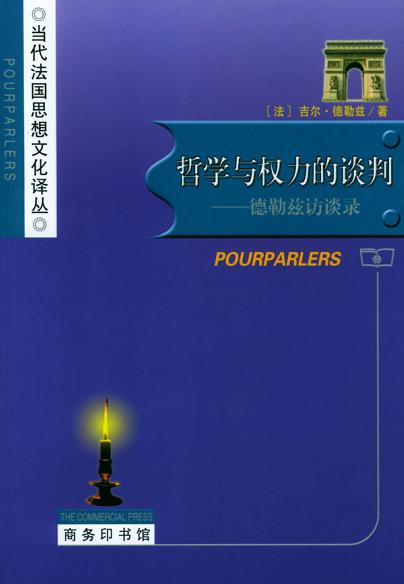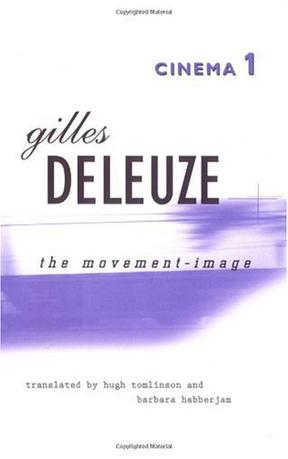-

A Thousand Plateaus
-

哲学与权力的谈判
《哲学与权力的谈判:德勒兹访谈录》为德勒兹的访谈录,主要介绍了法国现代的哲学理论,讨论了从《反俄狄浦斯》到《一千个平台》、电影、米歇尔·福柯等方面的话题。 -

Understanding Deleuze (Australian Cultural Studies.)
This accessible introduction to the comprehensive work of the influential French thinker Gilles Deleuze explains key Deleuzian concepts and illustrates the political, stylistic, and theoretical complexities of each. A glossary of key Deleuzean terms and a description of the impact of Deleuze are provided. -

Francis Bacon: The Logic of Sensation
Gilles Deleuze was one of the most influential and revolutionary philosophers of the 20th century. Francis Bacon is widely regarded as one of the most radical painters of the 20th century. This title presents a deep engagement with Bacon's work and the nature of art. Deleuze analyses the distinctive innovations that came to mark Bacon's style: the isolation of the figure, the violent deformations of the flesh, the complex use of colour, the method of chance, and the use of the triptych form. Along the way, Deleuze introduces a number of his own famous concepts, such as the "body without organs" and the "diagram", and contrasts his own approach to painting with that of both the phenomenological and the art historical traditions. Deleuze links Bacon's work to Cezanne's notion of a "logic" of sensation, which reaches its summit in colour and the "colouring sensation". Investigating this logic, Deleuze explores Bacon's crucial relation to past painters such as Velasquez, Cezanne and Soutine, as well as Bacon's rejection of expressionism and abstract painting. -

Cinema 2
Cinema 2: The Time-Image brings to completion Gilles Deleuze's work on the theoretical implications of the cinematographic image. In Cinema 1: The Movement-Image, Deleuze proposed a new way to understand narrative cinema, based on Henri Bergson's notion of the movement-image and C. S. Peirce's classification of images and signs. In Cinema 2, he explains why, since World War II, time has come to dominate film: the fragment or solitary image, in supplanting narrative cinema's rational development of events, illustrates this new significance of time. Deleuze ascribes this shift to the condition of postwar Europe: the situations and spaces "we no longer know how to describe"—buildings deserted but inhabited, cities undergoing demolition or reconstruction—and the new race of characters who emerged from this rubble, mutants, who "saw rather than acted." Deleuze discusses the films of Rossellini, De Sica, Fellini, Godard, Resnais, Antonioni, Pasolini, Rohmer, Ophuls, and many others, suggesting that contemporary cinema, far from being dead, is only beginning to find new ways to capture time in the image. -

Cinema 1
First published in France in 1983, this is at once a revolutionary work in philosophy and a book about cinema. For Deleuze, philosophy cannot be a reflection of something else; philosophical concepts are, rather, the images of thought, to be understood on their own terms. Here he puts this view of philosophy to work in understanding the concepts-or images-of film. Cinema, to Deleuze, is not a language that requires probing and interpretation, a search for hidden meanings; it can be understood directly, as a composition of images and signs, pre-verbal in nature. Thus he offers a powerful alternative to the psychoanalytic and semiological approaches that have dominated film studies. Drawing upon Henri Bergson's thesis on perception and C. S. Peirce's classification of images and signs, Deleuze is able to put forth a new theory and taxonomy of the image, which he then applies to concrete examples from the work of a diverse group of filmmakers—Griffith, Eisenstein, Pasolini, Rohmer, Bresson, Dreyer, Stroheim, Buñuel, and many others. Because he finds movement to be the primary characteristic of cinema in the first half of the twentieth century, he devotes this first volume to that aspect of film. In the years since World War II, time has come to dominate film; that shift, and the signs and images associated with it, are addressed in Cinema 2: The Time-Image. "The appearance of [this book] is an exciting event for film study and one that well deserves serious attention and commentary." —Film Quarterly